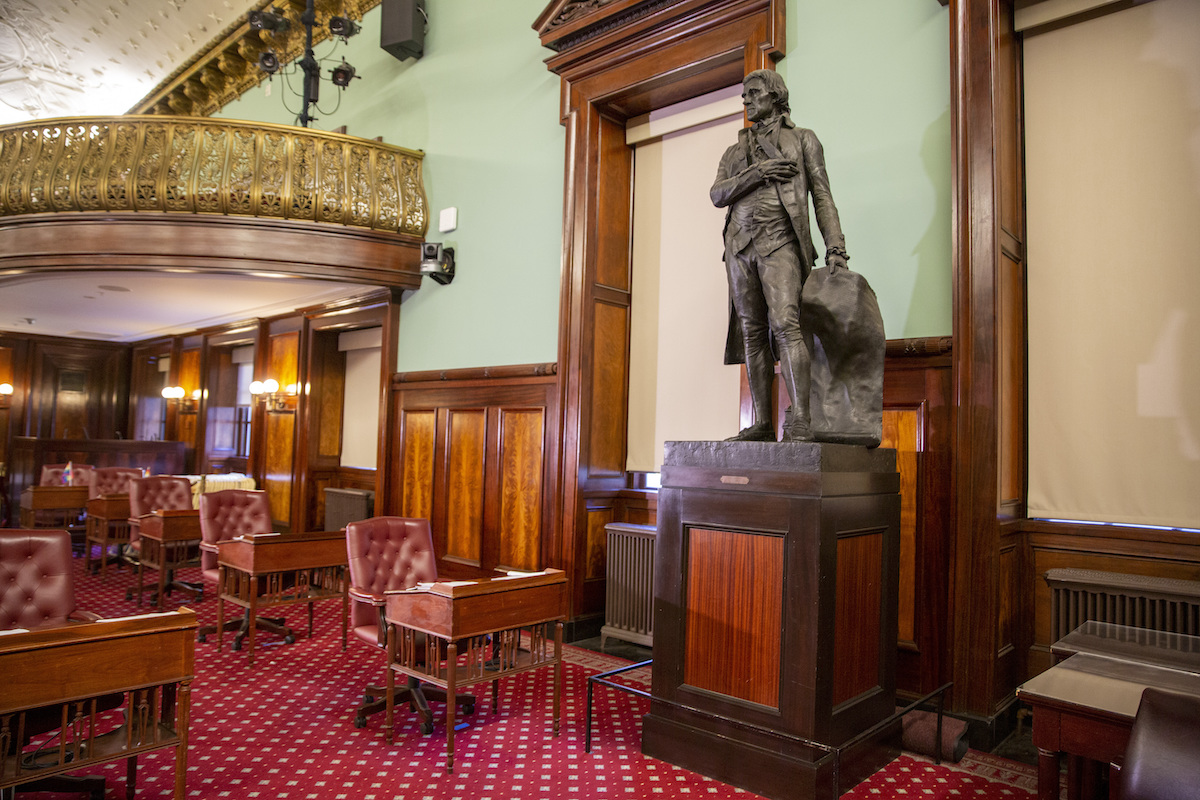Monuments have been created for thousands of years. The word monument itself finds its Greek etymological roots in Mnemosyne, the name of the ancient goddess of memory and mother of the nine muses. It is from memory that human culture itself arises and by which it is transmitted.
Monuments thus serve as physical vessels through which cultures the world over not only remember their heritage but also continue to transmit that heritage to the next generation.
It is only natural, then, that monuments become the center of culture wars for, as the Italian philosopher Giorgio Agamben has argued, “Remembrance is neither what happened nor what did not happen but, rather, their potentialization, their becoming possible once again.”
What we hold in our memory is not merely a bare history but the very material from which we build our future. In the book of Exodus, God explains to Moses that one of the reasons for the plagues of Egypt is so “you may tell in the hearing of your son and your son’s son the mighty things I have done in Egypt, and my signs which I have done among them, that you may know that I am the Lord.”
It is a great fear of the vital and potent force of memory that animates the recent fit of iconoclasm that has gripped so many of our institutions.
Twenty-one academics from the Imperial College History Group has recently called on Imperial College London to remove a statue of Thomas Henry Huxley, a 19th-century biologist and anthropologist who, while in favor of slavery’s abolition, espoused “a racial hierarchy of intelligence, a belief system of ‘scientific racism.’”
Similar concerns animated the New York City Public Design Commission’s unanimous vote to remove a statue of President Thomas Jefferson from New York City Hall’s council chamber.
The intent of both statues was not to celebrate either slavery or any sort of racism or prejudice. Huxley is lauded not for his attitudes concerning race but for his theory that birds are descended from dinosaurs. The case of Jefferson is even more curious.
The statue of Jefferson is a plaster model of one by French sculptor Pierre-Jean David d’Angers, which stands in the Capitol rotunda of the U.S. Congress in Washington, D.C. It depicts Jefferson with a quill in one hand and the Declaration of Independence in the other.
This declaration declared that “We hold these truths to be self-evident, that all men are created equal, that they are endowed by their Creator with certain unalienable Rights, that among these are Life, Liberty, and the pursuit of Happiness.”
The Declaration of Independence, Northwest Ordinance, U.S. Constitution and the Bill of Rights together form the fundamental legal heritage of our republic. Abolitionists such as Frederick Douglass, following Lysander Spooner, argued convincingly that this legal patrimony was fundamentally anti-slavery and that the Founders wrote better than they knew. Jefferson is thus part of that anti-slavery heritage in his most enduring contribution to this nation, and the statue in question celebrates that legacy in particular.
The irony is that those who seek to remove Jefferson do so on the grounds that that anti-slavery legal heritage, in part crafted by Jefferson, does not exist and that the arguments of Douglass, Spooner and other abolitionists were unsound.
In removing Jefferson on such grounds, however, we commit ourselves to an understanding of America as fundamentally rooted in racism and prejudice. If racism becomes engrained in our understanding of American history and memory, then racism becomes more likely, rather than less likely, to become our future.
As the novelist Milan Kundera has written: “The struggle of man against power is the struggle of memory against forgetting.”
At the center of Rome stands the Arch of Titus. Constructed in 81 AD by the Emperor Domitian, it celebrates the victory of Titus and Vespasian over the Jewish rebellion in Judaea 10 years prior. It was constructed as a symbol of the domination of Imperial Rome over the Jewish people, and yet it contains one of the few then-contemporary depictions of an artifact of Herod’s Temple and thus is also a medium for preserving Jewish heritage. The menorah illustrated on the Arch went on to serve as a model for the emblem of the state of Israel.
The Arch’s builders preserved better than they knew.
The challenge of monuments is a challenge of memory and thus imagination. Rather than abandoning the past as the place of our fears, let it be a vessel of our hopes. Our memories unavoidably shape us, and any future we construct will be based on them.
There is no option to erase the past and start anew; what we imagine we were will determine, in part, what we become, and a transformative grace applied to our past will secure a brighter future.
This article originally appeared in The Detroit News on Nov. 12, 2021.

